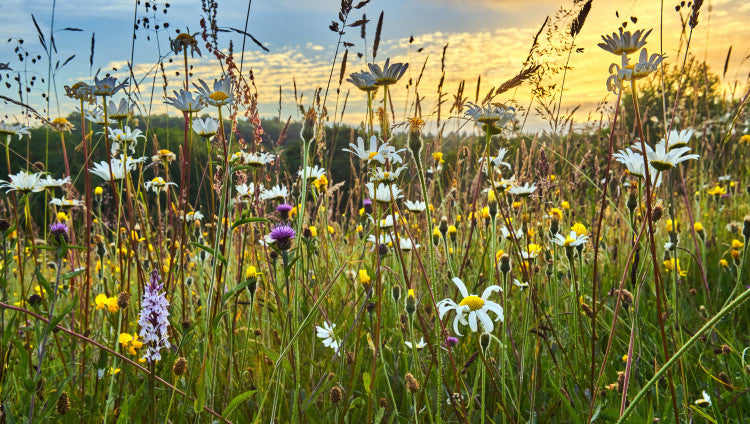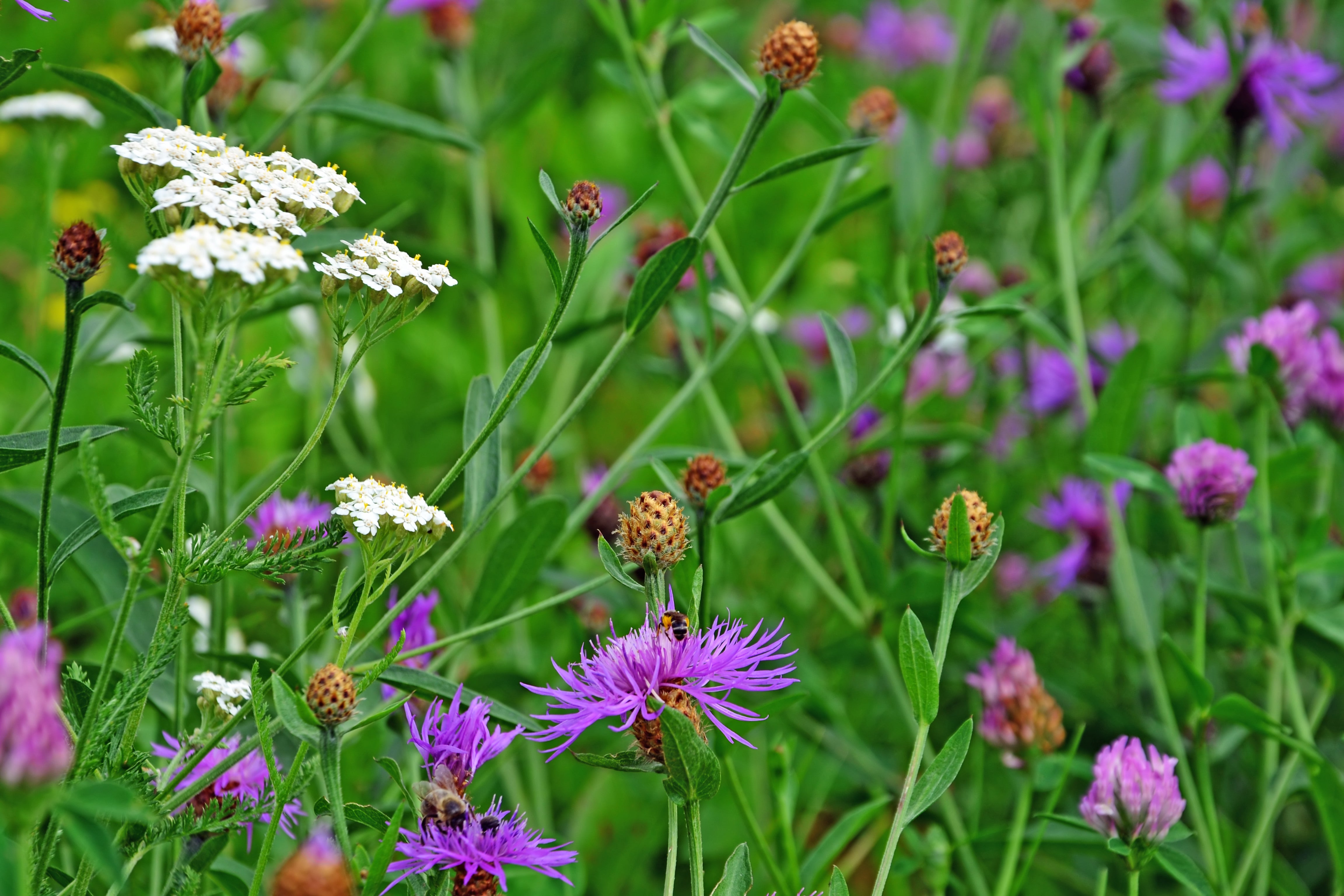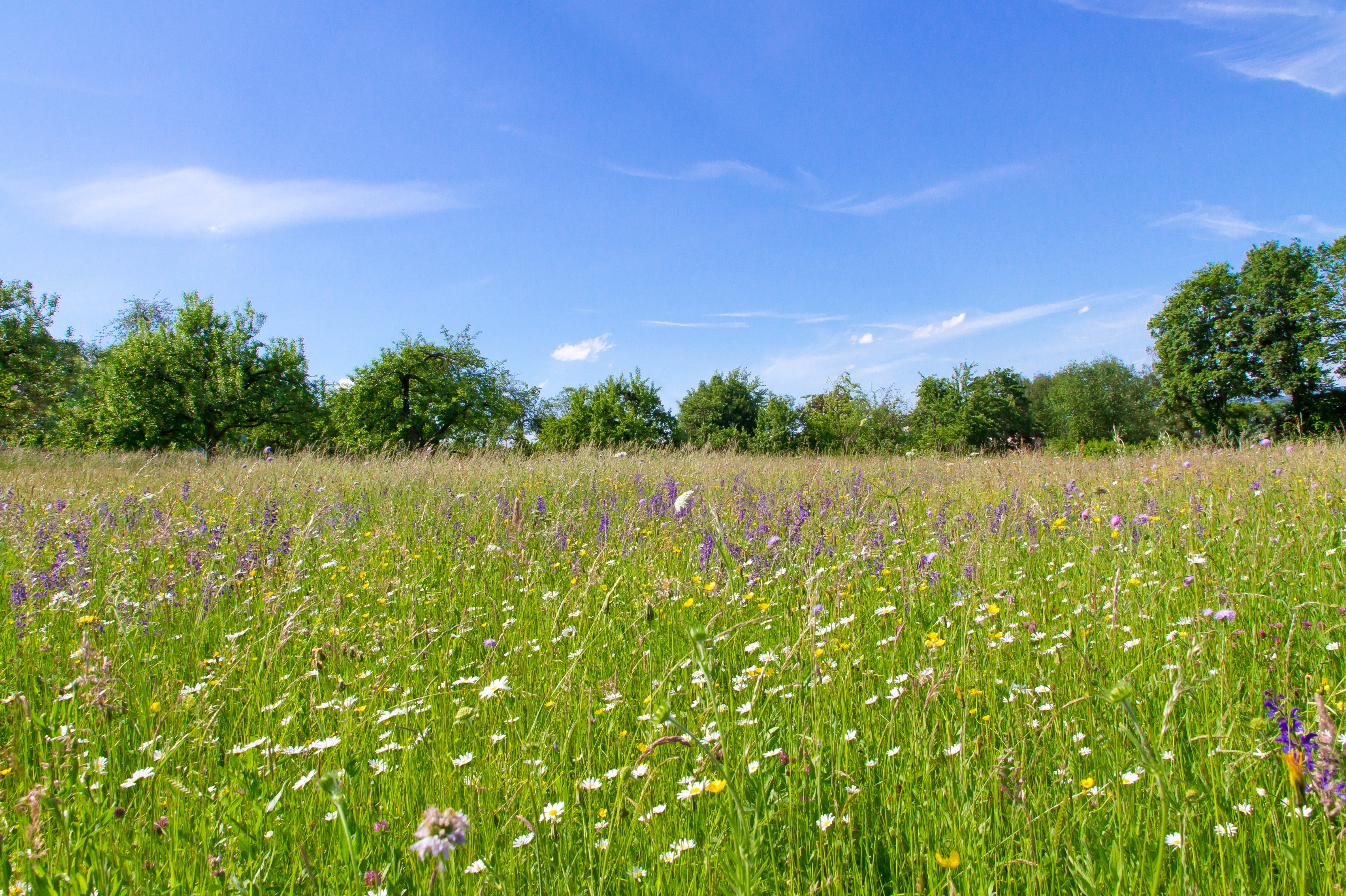Description
Classic meadow wildflower mix
The classic meadow wildflower mix is a general purpose wildflower mix with a good range of flowering species which are traditionally found in meadows and pastures in the UK. The mix contains only native sourced wildflower seed and can be used in a broad range of situations , particularly where there is a desire to increase the environmental value of grassland areas.
Product Summary
| Type of Mix | Main Flowering Period | Sowing Rate | Bag Weight | Bag Coverage |
|---|---|---|---|---|
| 20% wildflower & 80% grass | June - September | 5g/m2 | 0.25kg | 50m2 |
| 1 kg | 200m2 | |||
| 100% wildflower | June - September | 2g/m2 | 0.25kg | 125m2 |
Mixture
Wildflowers
| Scientific Name | Common Name | 80/20 mix | 100% mix |
|---|---|---|---|
| Achillea millefolium | Yarrow | 0.4% | 2.0% |
| Centaurea nigra | Common knapweed | 1.2% | 6.0% |
| Centaurea scabiosa | Greater knapweed | 0.8% | 4.0% |
| Daucus carota | Wild carrot | 0.8% | 4.0% |
| Digitalis purpurea | Foxglove | 0.8% | 4.0% |
| Galium verum | Lady's bedstraw | 1.2% | 6.0% |
| Hypericum perforatum | Common St John's wort | 0.4% | 2.0% |
| Leucanthemum vulgare | Oxeye Daisy | 0.6% | 3.0% |
| Malva moschata | Musk mallow | 0.6% | 3.0% |
| Medicago lupulina | Black medic | 1.4% | 7.0% |
| Myosotis arvensis | Field forget-me-not | 0.8% | 4.0% |
| Poterium sanguisorba | Salad burnet | 1.6% | 8.0% |
| Primula veris | Cowslip | 0.2% | 1.0% |
| Prunella vulgaris | Selfheal | 1.0% | 5.0% |
| Ranunculous acris | Meadow buttercup | 1.2% | 6.0% |
| Rhinanthus minor | Yellow rattle | 1.0% | 5.0% |
| Rumex acetosa | Common sorrel | 1.0% | 5.0% |
| Salvia verbenaca | Wild clary | 1.0% | 5.0% |
| Silene dioica | Red campion | 1.0% | 6.0% |
| Silene latifolia | White campion | 1.0% | 5.0% |
| Silene noctiflora | Night-flowering catchfly | 1.0% | 5.0% |
| Tragopogon pratensis | Goat's-beard | 0.8% | 4.0% |
Grasses
| Scientific Name | Common Name | 80/20 mix |
|---|---|---|
| Agrostis capillaris | Common bent | 4% |
| Cynosaurus cristatus | Crested dogstail | 20% |
| Festuca ovina | Sheep's fescue | 16% |
| Festuca rubra | Slender creeping red fescue | 24% |
| Phleum pratense | Timothy | 10% |
| Poa pratensis | Smooth meadow grass | 6% |
Application Recommendations
Where to use:
The classic meadow wildflower mix is suitable for sowing onto most low-moderate nutrient soil types. For maximum species diversity sow onto low nutrient soils which are well-drained.
| Soil pH | Soil Types | Soil Fertility | Topography | Soil moisture |
|---|---|---|---|---|
| Any | Any | Low nutrient | Upland Lowland |
Well drained |
When to use:
In general, the best time for sowing perennial wildflower seeds is late summer/autumn (late August-October) when there is likely to be consistent moisture and warmth without extremes of cold or dry. Spring (late March-May) is usually considered the next best time to sow perennial wildflower seed, particularly if the ground is likely to be waterlogged over the winter.
| Application Window | |||||||||||
|---|---|---|---|---|---|---|---|---|---|---|---|
| Jan | Feb | Mar | Apr | May | Jun | Jul | Aug | Sep | Oct | Nov | Dec |
How to use:
| Prepare the ground | |
|---|---|
| New Seed Bed | Overseeding |
| Remove unwanted vegetation. Cultivate the soil to a depth of 150mm removing the stones and debris. Level, then firm the seed bed. Rake the surface to product a fine tilth. |
Cut the grass short as possible and remove the clippings. Remove excess thatch to allow the seed to reach the soil surface. If compacted, aerate the soil. |
| Provide water | |
| If there has been little rainfall irrigate gently and slowly to fully wet through the soil profile | |
| Sow seed | |
| Sow seeds evenly using the correct sowing rate for the seed mix. Because sowing rates for wildflower seed are low, it is usually helpful to mix the seed with a carrier material such as slightly damp sand. Press the seeds into the soil using a roller or the back of a rake to ensure good seed to soil contact. |
|
| Provide water | |
| Keep the soil surface moist but not wet until the seeds have germinated AND established. Irrigate slowly and gently to avoid disturbing the seeds. |
|
Management & aftercare
Many grasslands and meadows are traditionally managed by grazing but mowing and removing the clippings can be used to replicate the process of hay cutting and grazing. It is important to remove clippings to avoid nutrients being returned to the soil. Soils for wildflowers are usually low in nutrients to encourage species diversity.
| Suggested mowing regime | |||||||||||
|---|---|---|---|---|---|---|---|---|---|---|---|
| Jan | Feb | Mar | Apr | May | Jun | Jul | Aug | Sep | Oct | Nov | Dec |
| Leave uncut unless growth is vigorous | Cut and collect clippings | Allow to flower and seed | Cut and collect clippings | Leave uncut unless growth is vigorous | |||||||
For further information regarding Classic Meadow Wildflower Mix, please contact our technical sales team on 01902 440250.
Delivery and Returns
Delivery charge (if applicable) applied at checkout. Next working day delivery is available on some products, as an option on orders placed before 1pm - excludes festive season & bank holidays. Please note deliveries to Highlands, Cornwall and more remote areas may take longer. Surcharges apply for non mainland locations, call for more information - More delivery information.
We require deliveries to be signed for. If no one is available to sign for your delivery, you may request it is left in a safe place by leaving a signed note for the driver, requesting the item is left without a signature. Please note that this is left at your own risk and at the driver's discretion.
For large orders, please be aware that if you require a smaller 7.5 tonne lorry, the maximum weight for pallets is 750 kg - otherwise the standard pallet size limit of 1000 kg applies.
Please note:
- For deliveries that require a pallet, the pallet/packaging itself is the customer's responsibility and will not be uplifted or taken upon delivery.
- Deliveries are kerb side only.
- It is possible a pallet order can be delivered on a vehicle up to the size of a 26T lorry.
If you have any access restrictions for lorries or large vehicles please speak to our sales team on 01902 440250.
Collection from our Telford, Shropshire, Trade Counter is available for this product - More collections information.









